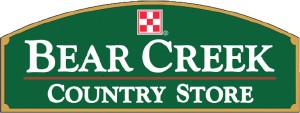Calves are on pasture with their dams where life is good. Suddenly, they’re faced with a plethora of stressors and challenges. Weaning calves typically includes the weaning itself, shipping, commingling, processing, a change in nutrition and – to top it off – potential swings in weather.
Weaning calves are often hungry, meaning they tend to bawl for their dam. Bawling for extended periods can irritate a calf’s throat and potentially lead to respiratory challenges.
These stressors, paired with a still-developing immune system, can ultimately lead to reduced disease resistance. But, if you can get calves eating quickly, they’re more likely to overcome stress and sickness.
Here are some tips to get freshly weaned calves eating quickly:
1. Use Cattle Lick Tubs When Weaning Calves.
Cattle lick tubs can be used as a free-choice supplement in calf receiving pens. For operations using supplement tubs in the cow herd, calves will be familiar with the tub and more likely to start eating quickly. Cattle lick tubs have two primary benefits for the calf. First, the licking action produces saliva to help ease throat irritation from bawling. Second, licking stimulates weaning calves’ appetites, prompting them to look for feed and water.
2. Offer Palatable Calf Starter Feed.
When calves search for feed, make sure there’s a palatable feed in the bunk. If calves like the feed, they will start eating and continue coming back to the bunk. A worst-case scenario is when a calf comes to the bunk for the first time and finds an unpalatable feed. It’s hard to get the calf back to the bunk after an initial bad experience. Use a weaning ration for beef calves with proper nutrition and palatable ingredients. A calf starter feed with intake control properties, like Accuration Starter with Intake Modifying Technology, can help stimulate consumption.
3. Select a Feed That Supports the Immune System of Weaning Calves.
It’s critical to support the immune system of weaning calves during high stress. Select a feed that addresses stressors and respiratory challenges head-on. The Purina starter line with RX3 Immune Support Technology prepares a calf’s natural defenses, so it’s better equipped to fight off stress and respiratory challenges. The technology is specifically formulated to support calves’ overall health, reduce costs and set calves up for a healthy future.
4. Find the Right Feed Form.
The physical feed form can influence consumption. Bigger pellets tend to work best for calf starter feeds because they are softer. Bigger pellets also allow calves to get more with every mouthful, which is essential for less aggressive calves standing at the bunk. ® ® ® ® 1 We use cookies on this site to enhance your user experience. By continuing to use this site, you consent to our cookies as described in our Privacy Policy. OK Avoid mealy feeds, which often separate and become less appealing to weaning calves.
5. Prioritize Starter Feed Quality.
Evaluate your feed quality and don’t settle for the least expensive option – it might be cheaper up front, but it could also be less palatable. A quality, palatable starter feed will get calves eating quickly during the first 10 to 14 days post-weaning and help them stay healthy.
Does your cattle nutrition program stack up? Find out with a Proof Pays feeding trial.
